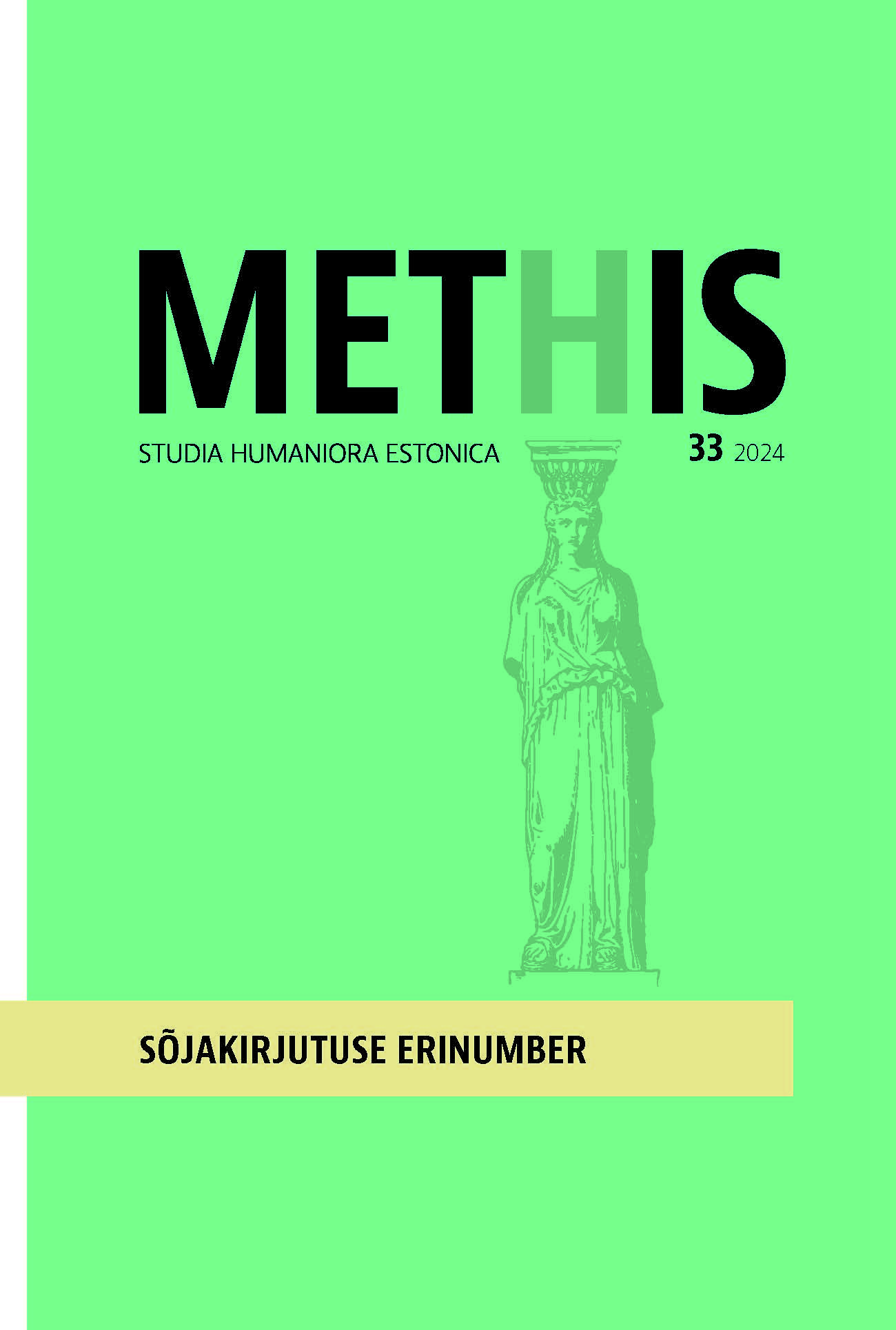Meeste jutud. Sissevaade militaarsete legendide traditsiooni / Men’s Stories. An Insight into the Tradition of Military Legends
DOI:
https://doi.org/10.7592/methis.v26i33.24135Keywords:
military legends, rumours, soviet army, military tradition, military service, kuulujutud, linnalegendid, militaarsus, Nõukogude armee, sõduripärimus, sõjaväeteenistusAbstract
Teesid: Artiklis keskendutakse meeste militaarsele pärimusele põhiliselt nõukogude sõjaväes, aga ka Eesti Kaitseväes teeninud meeste seas levinud legendide ja nendega seotud kuulujuttude kaudu. Paljud neist grupisisest ühtsustunnet tekitanud lugudest on siiani meeste suulises traditsioonis. Kahjuks ei ole neid juttude aktuaalse leviku ajal kogutud, aga siiski on nüüd võimalik sellest traditsioonist aimu saada spetsiaalsetest militaarsete huvidega internetikogukondade foorumitest (nt www.militaar.net), mõningast võrdlusainest pakub 1990. aastatel rahvaluulearhiivi laekunud materjal. Meeste, sh endiste sõdurite meenutatud legendid ja kuulujutud keskenduvad lugudele peidetud relvadest, distsipliinist, sõjaväeteenistuse vältimise viisidest, seksist, saatusest ning õnnelikest vedamistest, aga juttu on ka kohalikest erilistest objektidest (sildadest, salateedest jm).
The article focuses on the military tradition of men mainly in the Soviet army, but also through legends and related rumors among men who served in the Estonian Defense Forces. Many of these stories, which created a sense of group unity in the Soviet army, are still in the oral tradition of men. Unfortunately, they have not been collected during the actual spread of the stories, now it is possible to get an idea of this tradition through discussion groups of special military-interested internet communities (e.g. www.militaar.net). The material received in the folklore archive in the 1990s also provides some comparison material.
It is a folkloristic study, which is carried out keeping in mind the special and regular framework of the same folktale genres (legend, urban legend, rumour) and motifs. Urban legends are characterized by traditionality, the themes, plots and motifs of the stories are repeated in them. In some cases, as will be seen in the article, similar story motifs and storylines can be found throughout history.
In the case of military folklore, it is not a homogeneous substance, some of it is universal material related to military service, weapons or other similar material; and some is created and spread in the relevant context, for example during wars or conflicts. Several legends and the rumour cycles based on them that originally circulated in the repertoire of men or soldiers later reached a wider circulation due to special circumstances. These are, for example, the legend “The snake saves the boy” related to the war in Afghanistan known in the territories of the former Soviet Union; rumors about female snipers of Baltic origin, i.e. white tights, which have been circulating among Russian soldiers since the beginning of the 1990s, emerging in various military operations initiated by imperialist Russia, most recently in Ukraine, for example. The story has been used in official Russian propaganda for decades.The legends and rumors recounted by men and ex-soldiers discussed in this article focus on stories of hidden weapons and secret routes, discipline, ways to avoid military service, relationships with women during military service, fate, and lucky draws. Among this material, you can also find examples of stories mocking Soviet propaganda and the so-called cultural other in the Soviet army.
The heroes of conscript stories are mostly low-ranking soldiers who cope with their lives and even receive a reward. Soviet-era conscripts' memories, but legends in a much more general way, show the mentality and world of thought of a soldier serving in an army of a foreign country and ideology: the army is a wasted time, this time must somehow be stretched out/be away and at the same time try to use all the opportunities of this life wisely for your own benefit. Stories of avoiding military service have also been universal over time, because the will to serve in the army of a foreign power was non-existent. So it was in the Russian tsarist army, and so it was in the Soviet army. But in several stories, the justice of the legend also works: cowards and self-harmers are punished in their own way. It is interesting and somewhat unexpected that several legends characteristic of men's lore and soldier’s life are universal and well known among conscripts of the Estonian Defense Forces today. The stereotypical assessments of southern conscripts presented here and a large part of the motives of these stories do not originally come from Estonians but reflect the Great Russian colonialist attitude more generally.
These narratives have strong, apparently gender-specific commonalities and belief bases, and are characterized by repetition. For example, stories of avoiding military service in a totalitarian state go back centuries. Military legends convey the expectations, values and ideologies of men and tell about seemingly true events in recent history. Military legends and related rumors describe and express gender stereotypes, define masculinity in a way that pleases men. These stories offer models of behavior and express masculine dreams in a more general sense. At the same time, these stories, considered urban legends, both prohibit and encourage certain gender behaviors and describe the culturally favored behaviors of men – the desire for adventure and adrenaline, power, masculine strength and power, cunning, intelligence and resistance to evil.


